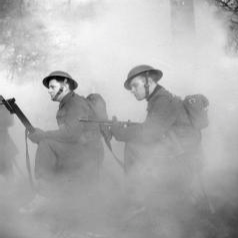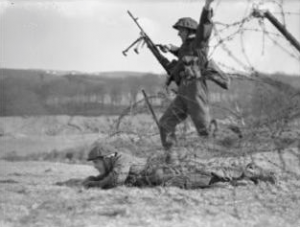Despite opposition from regular army authorities, the Chiefs of Staff instructed the five regional commands: Southern, Eastern, Western, London District and Household Division, and Scottish Command, to provide enough men for two Commandos per Command, with each Commando coming under the province of Combined Operations.
By July 1940, Churchill had appointed Admiral of the Fleet, Sir Roger Keyes as Director of Combined Operations. From a pool of volunteers; Commanding Officers were selected to lead the new Commando units. CO’s were then responsible for selecting Troop Leaders; it was these junior officers who would then select from the hundreds of volunteers Non-Commissioned Officers (NCO’s) and Other Ranks (OR’s) deemed suitable for Commando operations.
This selective system of reaching operational strength worked extremely well for the Commandos; with no shortage of volunteers, men of all ranks and from all cap badges were keen to escape the dull routine of wartime service. The selection process also enabled CO’s and Troop Leaders to stamp their own identity on the shape and development of the unit. It would be their ability to inspire and drive their new charges that would determine the operational success of the Commando.
Commanding Officer’s soon understood the importance of team spirit and camaraderie, and quickly grasped Churchill’s concept and vision for “specially trained troops of the hunter class”.
Troops were formed around officers who had hand-picked men from their own regiments, men they knew and men they could trust, bonds were made that would remain unbroken through war and peace and that would stand the test of time.
For more blogs by Ian McHarg click here
For books by Ian McHarg click here




